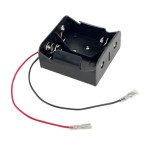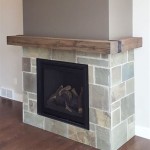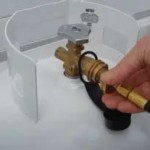Outdoor Wood Burning Fireplace Ideas: Creating Warmth and Ambiance
An outdoor wood-burning fireplace can transform a backyard into a cozy, inviting retreat, extending the enjoyment of outdoor spaces beyond the warmer months. Beyond providing warmth, these fireplaces enhance aesthetics, create a focal point for gatherings, and offer a unique cooking experience. Selecting the right fireplace requires careful consideration of space, desired style, local regulations, and budget. This article explores various design ideas, material options, and practical considerations for building or installing an outdoor wood-burning fireplace.
Design and Style Considerations
The design of an outdoor fireplace should harmonize with the existing landscape and architectural style of the home. The style can range from rustic and traditional to modern and minimalist, depending on the homeowner's aesthetic preferences. The overall design encompasses the materials used, the shape of the firebox and chimney, and any surrounding features like seating or storage.
Rustic Designs: Rustic fireplaces often incorporate natural materials like fieldstone, river rock, or reclaimed brick. These materials possess inherent textures and colors that evoke a sense of warmth and authenticity. A rustic fireplace might feature a large, arched firebox opening and a substantial chimney built from roughly hewn stone. Seating can be integrated by adding built-in benches made from logs or repurposed wood. These designs are particularly well-suited for homes with a more traditional or country-style aesthetic.
Modern Designs: Modern fireplaces tend towards clean lines, geometric shapes, and a minimalist aesthetic. Materials such as concrete, steel, and smooth-faced stone are frequently used. A modern fireplace might feature a rectangular firebox with a simple, unadorned chimney. Incorporating a concrete hearth and surrounding patio area can further enhance the modern look. The focus is on creating a sleek and uncluttered visual impact.
Transitional Designs: Transitional designs strike a balance between traditional and modern elements. They might incorporate a mix of materials, such as brick and stone, or combine classic shapes with contemporary details. For example, a transitional fireplace could feature a traditional brick firebox with a more streamlined chimney design. This approach allows for greater flexibility in adapting the fireplace to a wider range of architectural styles.
Beyond the overall style, the size and proportions of the fireplace are crucial considerations. A fireplace that is too large can overwhelm a small space, while one that is too small may not provide adequate warmth or visual impact in a larger area. Careful planning and consideration of the surrounding landscape are essential for achieving a harmonious design.
Another key aspect of the design is the chimney. The chimney's height and width must be properly calculated to ensure adequate draft and prevent smoke from blowing back into the surrounding area. Local building codes often specify minimum chimney heights and clearances from nearby structures.
Material Options for Outdoor Fireplaces
The choice of materials significantly impacts the appearance, durability, and cost of an outdoor fireplace. Selecting materials that are weather-resistant and appropriate for the local climate is essential for ensuring the longevity of the structure.
Brick: Brick is a classic and durable material that offers a timeless aesthetic. It is relatively easy to work with and can be used to create a variety of shapes and patterns. Brick is also fire-resistant and provides good insulation, which helps to retain heat. However, brick can be susceptible to water damage if not properly sealed. Different types of brick, such as firebrick, are designed to withstand the intense heat of a fireplace.
Stone: Stone offers a natural and rustic aesthetic. It is extremely durable and resistant to weathering. Stone is available in a wide variety of colors, textures, and shapes, allowing for a high degree of customization. However, stone can be more expensive than brick and requires more skilled labor to install. Different types of stone, such as limestone, granite, and sandstone, have different properties and suitability for fireplace construction.
Concrete: Concrete is a versatile material that can be molded into a variety of shapes and finishes. It is relatively inexpensive and can be stained or painted to match the surrounding décor. Concrete is also fire-resistant and can be reinforced with steel to provide additional strength and durability. However, concrete can be susceptible to cracking if not properly cured and sealed. Pre-cast concrete fireplace kits offer a convenient option for those seeking a faster and simpler installation process.
Metal: Metal, particularly steel, can be used for certain components of an outdoor fireplace, such as the firebox liner or chimney. Steel is strong, durable, and fire-resistant. However, it is susceptible to rusting if not properly treated and maintained. Using stainless steel can help to prevent corrosion. Metal fireplaces often have a more modern and industrial aesthetic.
The choice of materials should also consider the overall budget. Stone is generally more expensive than brick or concrete, while reclaimed materials can sometimes offer cost savings. Balancing aesthetic preferences with budgetary constraints is crucial for making an informed decision.
Mortar is another important material consideration. The mortar used to hold the bricks or stones together must be fire-resistant and able to withstand high temperatures. Refractory mortar is specifically designed for fireplace construction and is essential for ensuring the structural integrity of the fireplace.
Practical Considerations for Building and Maintaining an Outdoor Fireplace
Beyond aesthetic design and material selection, practical considerations play a crucial role in the success of an outdoor fireplace project. These include permitting requirements, safety precautions, fire prevention measures, and ongoing maintenance.
Permitting and Regulations: Before beginning any construction, it is essential to check with the local municipality regarding permitting requirements and building codes. Many jurisdictions require permits for outdoor fireplaces, and these permits may specify minimum distances from property lines, structures, and combustible materials. Adhering to these regulations is crucial for ensuring safety and avoiding potential fines or legal issues. Some areas may have restrictions on the type of fuel that can be burned or limitations on the use of outdoor fireplaces during periods of high fire risk.
Safety Precautions: Fire safety is paramount when operating an outdoor wood-burning fireplace. A designated fire pit area should be cleared of all combustible materials, such as dry leaves, grass, and overhanging branches. A spark arrestor should be installed on the chimney to prevent embers from escaping and potentially igniting nearby vegetation or structures. A fire extinguisher or water source should be readily available in case of emergencies. It is also important to supervise the fireplace at all times when a fire is burning and to never leave a fire unattended.
Firewood Storage: A designated firewood storage area should be located nearby for easy access to fuel. The firewood should be stored in a dry, well-ventilated area to prevent it from becoming damp or infested with insects. Stacking the firewood neatly also helps to improve the overall aesthetic of the outdoor space. Consider building a firewood shed or using a covered firewood rack to protect the wood from the elements.
Maintenance: Regular maintenance is essential for ensuring the longevity and safe operation of an outdoor fireplace. The fireplace should be cleaned regularly to remove ash and debris. The chimney should be inspected annually for cracks or damage and cleaned to remove creosote buildup, which is a highly flammable substance. Any damaged bricks or stones should be repaired or replaced promptly. Proper maintenance will help to prevent costly repairs and ensure that the fireplace remains a safe and enjoyable feature of the outdoor space.
Furthermore, consider the placement of the fireplace in relation to prevailing winds. Positioning the fireplace so that smoke is carried away from the house and neighboring properties will enhance the enjoyment of the outdoor space. The placement should also consider the proximity to seating areas and other outdoor features, such as patios or gardens. Proper planning and attention to detail will help to create an outdoor fireplace that is both functional and aesthetically pleasing.

30 Outdoor Fireplace Ideas Cozy Fireplaces

22 Cozy Diy Outdoor Fireplaces Fire Pit And Fireplace Ideas

10 Outdoor Fireplace Ideas You Ll Want To Copy Bob Vila

30 Outdoor Fireplace Ideas Cozy Fireplaces

45 Beautiful Outdoor Fireplace Ideas Install It Direct

Outdoor Wood Burning Fireplaces Ideas On Foter Fireplace Stove

25 Gorgeous Outdoor Fireplace Ideas Fire Pit Designs

Outdoor Wood Burning Fireplace

25 Outdoor Fireplace Ideas Fireplaces Fire Pits

45 Beautiful Outdoor Fireplace Ideas Install It Direct
Related Posts








